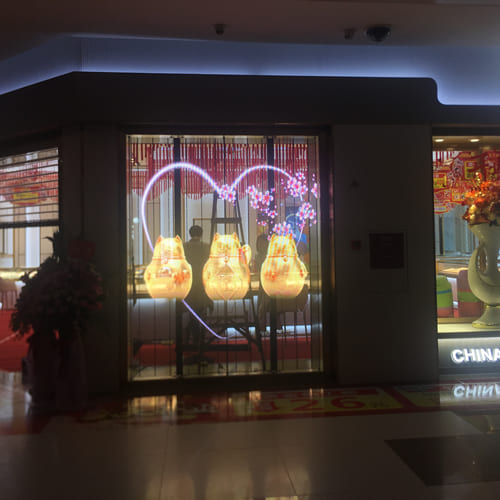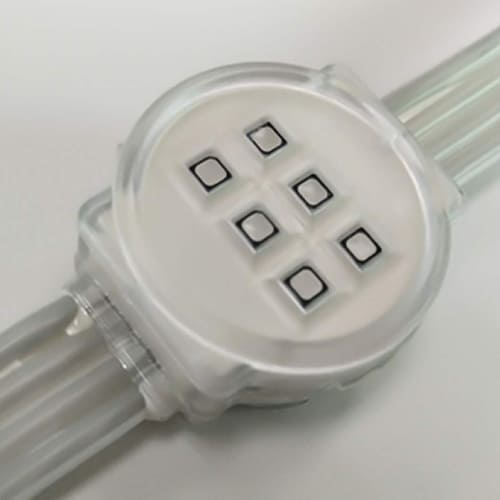How to choose the right LED mesh screen?
Views : 350
Update time : 2025-09-30
Choosing the right LED mesh screen requires balancing transparency, resolution, environment, and budget. Here’s a step-by-step guide to make an informed decision:
1. Define Your Application & Environment
| Scenario | Recommendations | Critical Factors |
|---|---|---|
| Outdoor Facade | High brightness (≥6,000 nits), IP65+, P6–P16mm pitch | Weather resistance, long viewing distance |
| Retail Window | Medium transparency (50–70%), P3.9–P6mm pitch | Close viewing, content visibility |
| Concert Stage | Flexible mesh, high refresh rate (≥3,840Hz) | Curved setups, camera-friendly |
| Indoor Exhibition | Fine pitch (P1.9–P3.9mm), 1,500–3,000 nits | High resolution, ambient light control |
2. Prioritize Key Specifications
- Pixel Pitch (P):
- P = Viewing Distance (m) / 3.5 (e.g., 10m distance → P2.85mm, choose P3.9–P6mm).
- Smaller pitch = higher resolution but lower transparency.
- Transparency:
- 30–50%: High-resolution graphics (e.g., P3.9–P6mm).
- 70–90%: Architectural integration (e.g., P10–P25mm).
- Brightness:
- Outdoor: 5,000–8,000 nits (combat sunlight).
- Indoor: 1,500–3,000 nits (adjustable to avoid glare).
3. Evaluate Technical Needs
- Refresh Rate: ≥3,840Hz if filmed with professional cameras.
- Viewing Angle: ≥140° for wide audience coverage (e.g., stadiums).
- Flexibility:
- Bend Radius: ≤500mm for tight curves/columns.
- Weight: <12kg/m² for hanging on glass facades.
- Lifespan: Choose ≥80,000 hours for 24/7 use.
4. Budget & Total Cost Analysis
| Cost Factor | Considerations |
|---|---|
| Screen Price | 800–3,000/m² (varies by pitch/brand) |
| Installation | Structural support, cables, labor (~20–30% of total cost) |
| Content Design | Adapt graphics for transparency (black = invisible) |
| Maintenance | Access for repairs, spare modules (5–10% budget reserve) |
5. Vendor Checklist
Ask suppliers:
- Can you provide a content test on the actual mesh? (Avoid color distortion)
- Is the control system compatible with your video sources (e.g., HDMI, SDI)?
- What’s the warranty for modules/power supplies? (Opt for ≥3 years)
- Do you offer technical support for content optimization?
6. Avoid Common Pitfalls
- ❌ Ignoring Transparency Trade-offs: Higher resolution = less see-through.
- ❌ Underestimating Viewing Distance: A P10 screen looks pixelated at 5m.
- ❌ Overlooking Ambient Light: Glass reflections can wash out indoor displays.
- ❌ Skipping Mockups: Test a sample module onsite for realism.
Quick Selection Table
| Use Case | Ideal Pixel Pitch | Brightness | Transparency | Brand Examples |
|---|---|---|---|---|
| Skyscraper Media Art | P10–P16mm | ≥6,000 nits | 80–90% | Unilumin, Leyard |
| Luxury Store Window | P3.9–P6mm | 2,500 nits | 50–60% | Silicon Core, Auroled |
| Concert Stage Layer | P4.8–P8mm | 5,000 nits | 60–70% | Absen, INFiLED |
| Museum Interactive | P1.9–P2.5mm | 1,800 nits | 30–40% | Tecnon, LG (OLED ref.) |
Pro Tips
- Content First: Design visuals with bold lines, vibrant colors, and black backgrounds (transparent areas).
- Hybrid Solutions: Combine mesh screens with traditional LEDs for mixed-resolution zones.
- Future-Proofing: Opt for modular designs that allow pixel pitch upgrades.
📌 Final Advice: Partner with an experienced integrator. They’ll handle structural analysis, content calibration, and avoid costly mistakes. Request case studies from past projects similar to yours!
By following this framework, you’ll balance aesthetics, functionality, and cost for a stunning LED mesh installation.
Related News
 Outdoor LED Display Panel Price
Outdoor LED Display Panel Price
2025-11-06
The cost of outdoor LED display panels varies significantly based on pixel pitch (P3, P4, P5, etc.)
 What professional LED pixel calibration tools are there?
What professional LED pixel calibration tools are there?
2025-09-30
Here's a professional-grade LED pixel calibration toolkit comparison for broadcast, architect
 How to perform pixel calibration on an LED mesh screen?
How to perform pixel calibration on an LED mesh screen?
2025-09-30
Performing pixel calibration on an LED mesh screen requires specialized tools and techniques to addr
 How to maintain an LED mesh screen?
How to maintain an LED mesh screen?
2025-09-30
Maintaining an LED mesh screen requires proactive care tailored to its transparency, outdoor exposu
